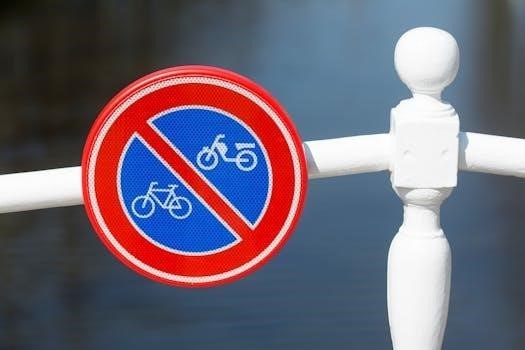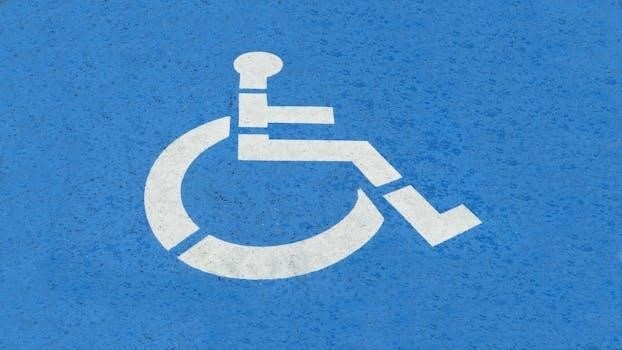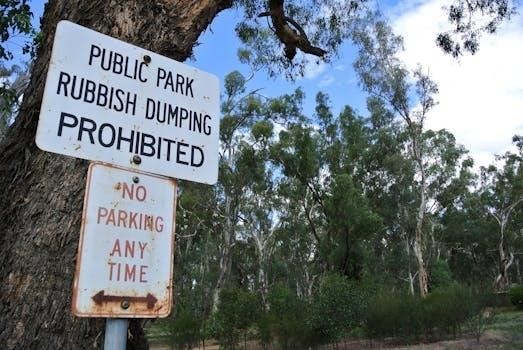Understanding HOA Rules and Regulations
HOA rules and regulations are crucial for community living, ensuring harmony and property value. These guidelines, sometimes found in a PDF document, cover various aspects, from architectural standards to parking and pet policies, shaping the community’s daily life.
What are HOA Rules and Regulations?
HOA rules and regulations are a set of guidelines established by a Homeowners Association (HOA) to govern the properties within a specific community. These rules, often detailed in a document like a PDF, outline the standards and expectations for residents. They cover a wide array of topics, ensuring a consistent and well-maintained living environment. They’re designed to protect property values, promote community harmony, and ensure the safety and comfort of all residents. These rules are a vital component of community living, helping to regulate shared spaces and maintain the overall aesthetic and functional integrity of the neighborhood. They are binding and must be followed by all homeowners and residents within the association.
Purpose of HOA Rules and Regulations
The primary purpose of HOA rules and regulations, often accessible in a PDF format, is to maintain and enhance the quality of life within a community. These rules aim to establish a consistent standard of living, ensuring a harmonious environment for all residents. They protect property values by setting guidelines for maintenance and aesthetics. Additionally, HOA rules are designed to promote the safety and well-being of the community, addressing issues like parking, noise levels, and common area usage. By setting clear expectations, these regulations minimize conflicts and create a well-organized and desirable place to live. They foster a sense of community and ensure that everyone contributes to the overall well-being of the neighborhood.

Key Components of HOA Governing Documents
HOA governing documents, often found as PDFs, include the CC&Rs, bylaws, and rules and regulations. These establish the framework for the association’s operation and resident conduct within the community.
Declaration of Covenants, Conditions, and Restrictions (CC&Rs)
The Declaration of Covenants, Conditions, and Restrictions (CC&Rs), often available as a PDF, is a foundational document for any HOA. It outlines the rules that govern the use of property within the community. These CC&Rs are legally binding and establish the rights and responsibilities of homeowners. They can include restrictions on property modifications, specify maintenance responsibilities, and define the overall vision for the community’s aesthetic. These documents serve to protect property values and ensure a consistent living environment for all residents. Understanding the specific content of the CC&Rs is crucial for every homeowner within the association.
Bylaws
The bylaws, often accessible as a PDF document, detail the internal operations of the HOA. They establish the rules for how the association is governed, including election procedures, meeting schedules, and the powers and duties of the board of directors. These bylaws are essential for ensuring transparency and accountability in the HOA’s management. They outline the process for amending governing documents and define the rights of the membership. Understanding these bylaws is key for homeowners to participate effectively in the HOA and ensure its smooth functioning, promoting a well-organized community.
Rules and Regulations
The Rules and Regulations, frequently found in a PDF format, are the specific guidelines that dictate day-to-day life within the HOA community. These rules address aspects like noise levels, landscaping maintenance, and use of common areas. They aim to maintain the community’s aesthetic appeal and ensure a comfortable environment for all residents. Unlike the CC&Rs and bylaws, these rules are generally easier to amend, allowing the HOA to adapt to the changing needs of the community. Familiarity with these rules is important for every homeowner to promote harmonious living.

Common HOA Rules and Regulations
Common HOA rules often address architectural guidelines, parking restrictions, and pet policies. These regulations, typically found in a PDF, ensure community standards and maintain property values for all residents.
Architectural Guidelines
Architectural guidelines are a cornerstone of HOA rules, typically detailed within a PDF document. These rules dictate the aesthetic standards of the community, ensuring uniformity and preserving property values. They often cover exterior modifications, including paint colors, landscaping, and structural changes. Homeowners usually need prior approval from the HOA board before undertaking any alterations to their property’s exterior. These guidelines aim to maintain a consistent look and feel throughout the community, preventing any one property from detracting from the overall appearance. Compliance is essential, and violations can lead to fines or the need to revert changes to their original state. The detailed nature of these rules can be found in the association’s governing documents.
Parking Regulations
Parking regulations within an HOA, often outlined in a PDF document, are designed to manage parking effectively and prevent congestion. These rules often specify where residents and guests can park, including designated spaces, guest parking areas, and prohibited zones. They may also restrict the parking of certain types of vehicles, like commercial trucks or oversized vehicles, to maintain the community’s aesthetic. Some HOAs assign parking spaces and storage areas for exclusive use by residents. Enforcement of these regulations is essential to maintain order and accessibility. Violations could result in warnings or fines, which could be detailed in the association’s rules and regulations documents. Residents are encouraged to review these guidelines to avoid parking-related issues.
Pet Policies
Pet policies within an HOA, frequently found in PDF documents, establish guidelines for pet ownership to ensure a harmonious community environment. These policies often include restrictions on the number and type of pets allowed, as well as requirements for leashing and cleaning up after pets. Some HOAs may have specific rules about pet size and weight. These regulations aim to address issues such as noise, safety, and cleanliness. Homeowners are expected to adhere to these guidelines and ensure their pets do not disturb other residents. Non-compliance could result in warnings or fines as stipulated in the HOA’s rules and regulations. It is a homeowner’s responsibility to understand the pet policies before acquiring a pet.
Enforcement and Compliance
HOA rules are enforced to maintain community standards. Violations result in consequences, such as warnings or fines. Compliance ensures a harmonious living environment for all residents and protects property values.
How HOA Rules are Enforced
HOA rules are typically enforced by the HOA board or a designated management company. The process usually begins with a violation notice sent to the homeowner. This notice details the infraction and provides a timeframe for correction. If the violation persists, further action may be taken, including fines, suspension of privileges, or in extreme cases, legal action. The goal is to ensure compliance and maintain community standards, not to engage in confrontation. Most HOAs aim for voluntary compliance through clear communication and consistent application of the rules.
Consequences of Violations
Violating HOA rules can lead to various consequences, starting with written warnings and notices to correct the issue. Persistent violations often result in fines, which can escalate with repeated offenses. Some HOAs may suspend access to community amenities, such as pools or gyms. In severe cases, where violations are ongoing and significantly impact the community, the HOA may pursue legal action, including lawsuits or liens against the property. It’s crucial for homeowners to understand their HOA’s rules to avoid these potential penalties and maintain a harmonious living environment within the community.

Updating and Amending HOA Rules
HOA rules are not static; they must evolve to meet the community’s changing needs. This section explores the processes involved in modifying existing rules, ensuring they remain relevant and fair to all residents.
Process for Rule Changes
The process for changing HOA rules typically involves several key steps to ensure transparency and community involvement. Initially, a proposal for a rule change is often submitted to the HOA board. This proposal outlines the existing rule, the desired modification, and the rationale behind the change. The board then reviews the proposal, often seeking legal counsel to ensure compliance with state and local laws. If approved, the proposed change is then communicated to homeowners, often through meetings or written notices. Homeowners are typically given an opportunity to provide feedback, and a vote of the membership, as defined in the association documents, is usually needed for final approval. Following the vote, the updated rules are officially recorded and distributed to the community. This process aims to balance community input with legal requirements, making sure changes are well thought out.
Importance of Regular Review
Regular review of HOA rules and regulations is essential to ensure they remain relevant and effective. Over time, community needs and values may shift, necessitating updates to existing guidelines. A periodic review allows the HOA to identify rules that are outdated, ambiguous, or no longer serving their intended purpose. This process can also help address any unintended consequences of current rules or identify gaps in coverage. Furthermore, regular reviews provide an opportunity to incorporate changes in state and local laws that could affect the association. By proactively reviewing and updating their rules, HOAs can avoid future conflicts, maintain community harmony, and ensure the long-term health and viability of the neighborhood. It’s a continuous process vital for maintaining a well-functioning community.

Legal Considerations and HOA Rules
HOA rules must comply with state and local laws, and board members have responsibilities. Understanding these legal aspects ensures that the HOA operates correctly, protecting both the association and its members from legal issues.
State and Local Laws Affecting HOAs
State and local laws significantly influence HOA operations, dictating aspects like enforcement procedures and permissible rules. These regulations ensure that HOA guidelines remain within legal boundaries, preventing conflicts and promoting fairness. For instance, some states have specific laws regarding notice requirements for meetings or limitations on fining procedures. HOAs must stay informed of changing legislation to avoid legal challenges, and must make sure their practices are in compliance. Ignoring these laws can result in serious penalties. These laws also shape the parameters of HOA authority, defining what rules can be enforced and how they should be applied.
HOA Board Member Responsibilities
HOA board members have crucial responsibilities in upholding community standards and rules. They must enforce regulations fairly, ensuring all residents comply, while also maintaining the community’s common areas. Board members are also responsible for organizing budgets and ensuring financial transparency, while adhering to state and local laws. They should act in the best interests of the entire community. They also have to communicate effectively with residents, address concerns, and facilitate rule updates as needed. Their role is essential for the stability and proper functioning of the HOA and the community.
